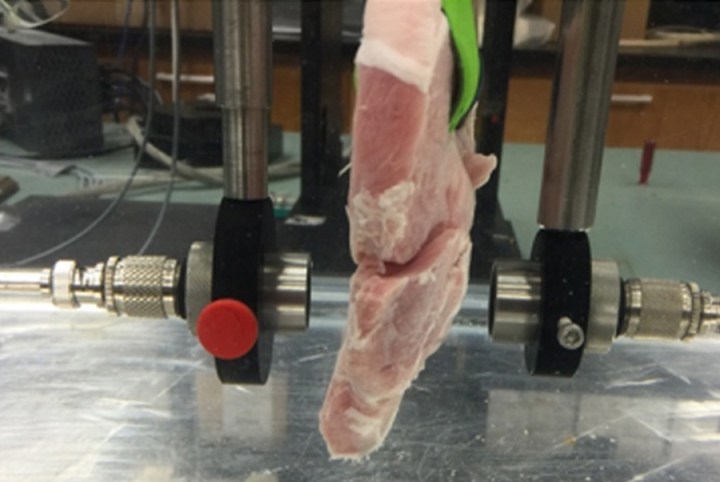
That’s the human body according to Andrew Singer of the University of Illinois, Sky News reported recently. And that meat bag is an interesting test platform for wireless data, he thinks: “Communicating in the ocean and communicating in your body are very similar.”
The similarity is what led researchers at the University of Illinois at Urbana Champaign to test ultrasound wireless transmission through meat at speeds fast enough for Netflix. Using slabs of beef liver and pork loin, the researchers were able to achieve stable transmissions up to 30Mbps. While the primary application will be biomedical implant transmissions, the research may have other applications.
Implanted biomedical devices such as pacemakers, defibrillators, glucose monitors, insulin pumps, and other devices using conventional RF (radio frequency) wireless technology have proved troublesome for several reasons. Signal degradation from soft tissues, low bandwidth dictated by the limited speed (50kbps) of approved radio frequency bands, and low internal battery power are all issues with traditional wireless connections in implanted devices.
Making the conceptual leap from underwater research with long-range acoustics to human bodies (bags of salt water with bits of tissue and other materials), the Illinois researchers experimented by measuring sustained transmission speed through slabs of meat, which they hung in front of tanks of water holding ultrasonic transmitters. They tested both beef liver and pork loin with the ultrasonic setup and achieved data rates of 20-30Mbps. That speed is fast enough for real-time video transmission through tissue. While the scientists have yet to test with living tissue, the implications for implanted medical devices are immense.
If nothing else the concept of transmitting data via living beings is the stuff of movie plots. A second Matrix trilogy could be based on people used as wireless adapters and access points. And picture this: receiving a message from your liver, complete with transmitted image, with the question, “Do you really need another shot of tequila?”




